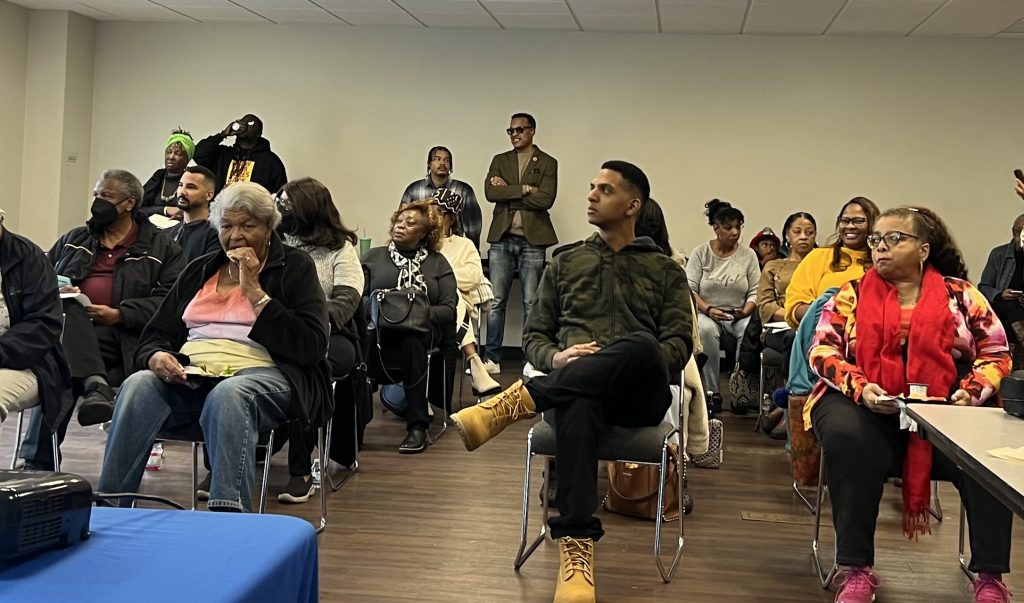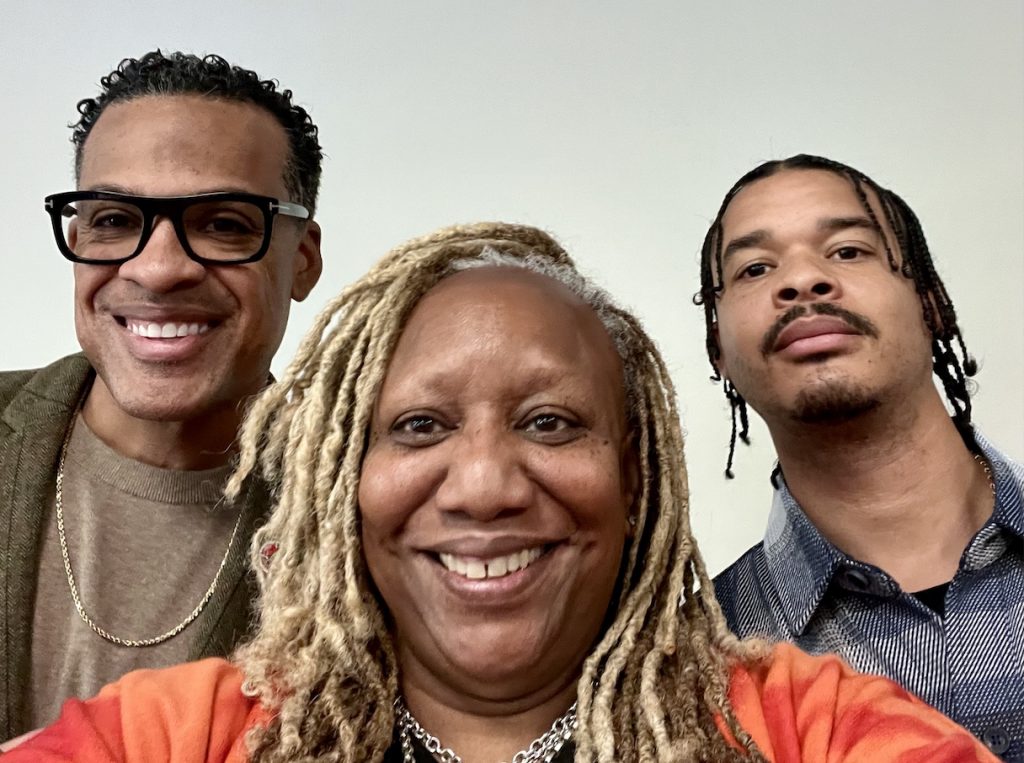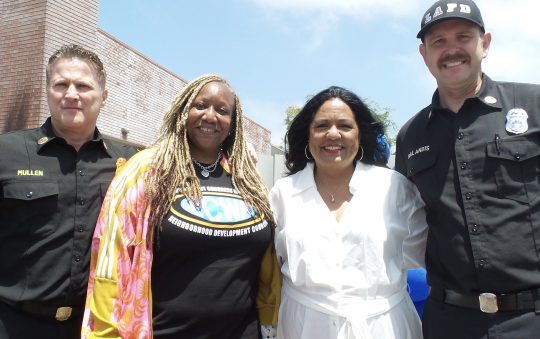
The Empowerment Congress West Area Neighborhood Development Council (ECWANDC) kicked-off Black History Month with a presentation on “130 years of Black Firefighters in Los Angeles.” The event, held on Feb. 3, took place at the community room next to Fire Station No. 94 in South L.A. The speakers were Robert Hawkins and Daejon Moore.
Hawkins is a fire captain over LAFD’s Firefighter Recruitment Division, and president of the Stentorians, a fraternal organization of African American firefighters. Moore, who also spoke on the perseverance of the African American firefighters, is a paramedic and six years veteran of LAFD.
Lynne Hobbs from The Wilfandel Club, the oldest African American women’s service organization, also addressed the crowd. Gina M. Fields, ECWANDC chair, played a leading role in organizing the program.
Related Stories:
Opening the program, Hawkins discussed how he became a firefighter and the importance of his organization.
“One of the roles of the Stentorian is to make sure the Fire Department has accountability when it comes to minorities. I grew up in Inglewood and participated in gang activities. A firefighter mentored me, and I too wanted to be a firefighter. Today, I am a captain and a Stentorian,” he explained.
The Vernon Fire Department hired Hawkins when he was 21 years old. The LAFD hired Hawkins two years later in 2003.
“One day I noticed a rookie at the fire station – Daejon Moore, a paramedic who liked to play games like trivia about the history of African American fire fighters. Moore was a history buff,” recalled Hawkins. “We became comrades.”
Expounding on the theme of “130 years of Black Firefighters in Los Angeles,” Hawkins said, “One of the first Black firefighters was Sam Haskins, who was born enslaved. Haskins joined the Los Angeles Fire Department in 1892 and was the first firefighter to die in the line of duty in 1895.”
“Due to segregation at cemeteries, Haskins grave was unmarked, but the Stentorian made sure that Haskins had a head stone,” noted Moore.

“In the Los Angeles Fire Department in the early years, it was found that separate is not equal. George Bright was the second African American hired to the LAFD and he was promoted to lieutenant firefighter in the LAFD. Bright was the first to promote,” Moore added.
“Station No. 4, which was near Belmont High School in Los Angeles, became the main reason African American firefighters were sent to Central Station No 30. The whites did not want the school children to see African Americans in a position of power,” explained Moore.
Fire Station No. 30 is now a museum for the artifacts and history of African Americans in the LAFD. The station is located at 1401 S. Central Ave., in Los Angeles.
Hawkins and Moore also shared the history of the Stentorians. The organization was founded in 1954 by firefighter Arnett Hartsfield Jr., who began his LAFD career in 1940. Later, Hartsfield earned a law degree from USC and led the battle for desegregation of the LAFD. Hartsfield died at age 96.
In 1980, the Stentorians opened an office at old station No. 46 at 1409 W. Vernon Ave. At this site, the organization mentors youth, offers EMT scholarships, and provide support system for African American firefighters.
Hobbs of the Wilfandel Club described the group’s beginnings as a place where Black women could gather for activities and fellowship.
“During the 1950s, segregation prevented African American women from having anywhere they could gather. The Wilfandel Club was founded in 1945 by two women – Fannie Williams, an entrepreneur and community leader, and Della Williams, the wife of architect Paul Williams. The goal was to promote civic betterment and philanthropic endeavors,” said Hobbs.
The club sponsors scholarships, present events for youth, and hold monthly meetings featuring guest speakers. The club’s facility, located at 3425 W Adams Blvd. in Los Angeles, is also available for rental for social and community events.





